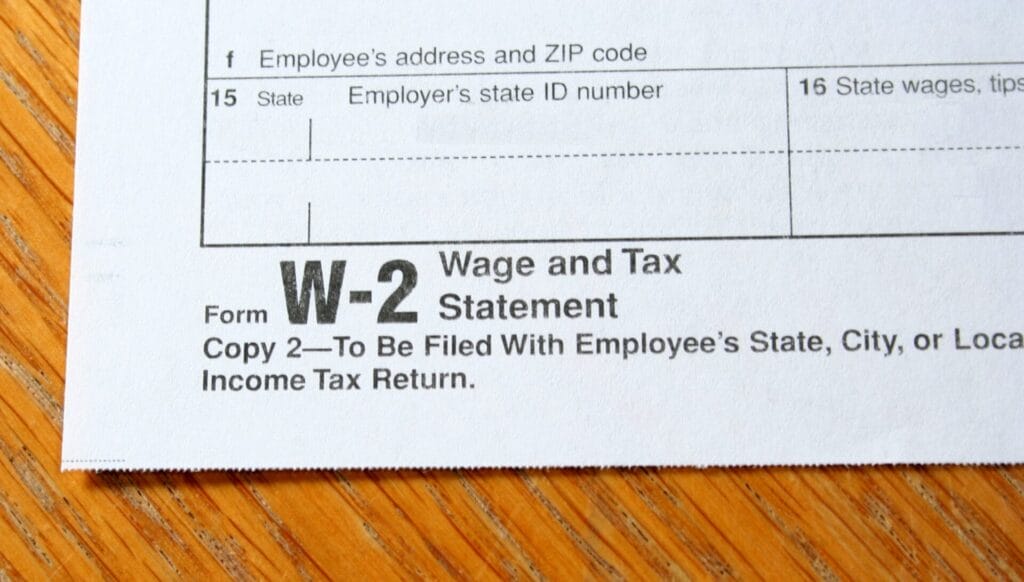When you are seeking a mortgage, there are many options available. One of the most popular is a “W2 mortgage.” These loans, which are a common option for salaried and wage-earning employees, could help you purchase a wonderful home.
If you use a W2, you’ll need a variety of important documents to verify your overall financial situation and credit history. Let’s look at some of the documents you’ll need for a W2 loan.
What is a W2 Mortgage?
A “W2 mortgage” is not a specific type of mortgage product like an FHA loan or a VA loan. Instead, it is a loose term used to describe a mortgage that uses the W2 document in part or in full to complete the application. More specifically, it’s a document that shows how much you earn, which is of critical importance to lenders.
The W2 is a tax document required by the IRS. It simply reports how much you earn from an employer. A “W2 employee,” therefore, is simply a person who works for a business and has taxes withheld from their paychecks.
It’s the responsibility of employers (not the workers) to fill out the W2 documents. All employers, regardless of size, are required to send W2 forms for each and every employee whom they have paid a salary or wage. These documents have to be sent out by January 31st of the following year. So for the 2021 tax cycle, employers have until January 31st, 2022 to send out W2s that documents earnings for January 1st through December 31st, 2021.
The primary purpose of a W2 is to communicate earnings and tax withholdings to the IRS. However, because these documents note your income, they can have other purposes as well. These uses can include mortgage applications.
The Documents You’ll Need for a W2 Mortgage
There are numerous documents you’ll need for your mortgage application. Most of these documents will verify three key factors: your income, your debts, and your history with making payments, which can include consumer debt, monthly rent, car loans, and other financial obligations.
W2s
The fundamental document for a W2 mortgage is, obviously, your W2s. Acting as the foundation for your overall application, these papers will demonstrate your total income, which is essential to mortgage lenders.
Most of the time, you’ll need W2 forms from the past two years. You should get W2 information from your employer if you don’t have this information on hand. If you have more than one job, be sure to get W2s from all employers, as this additional income will help you secure a better loan.
Proof of a Downpayment
Unless you are using W2 information to secure a VA loan or USDA loan, it’s virtually guaranteed that you will need a downpayment. The lender will need to see some kind of proof that you have the available capital to support the purchase. Information on bank accounts or even investment accounts could provide the proof you need to reach final approval on a W2 mortgage.
Exactly how much you need is hard to say, but most people will certainly need some type of downpayment, usually about 5% to 10%, although it’s certainly possible to get a loan with a smaller downpayment total.
Tax Returns
While you have already verified your income through the W2 documents, your lender may also want to see your tax returns, usually from the past two years. Tax returns can be useful for a variety of reasons, helping to support your information while giving the lender greater reassurance you have a stable income.
Tax returns are especially important if you earn an additional income working as an independent contractor of some kind. For example, if you have a day job (the W2 job) but also earn extra income working in graphic design, this income should be stated on your tax returns. This can be shown to the lender to increase your borrowing potential.
Paystubs
Paystubs are another document that can verify your income, providing greater detail to your lender. While the W2 is for tax purposes, and the paystubs are for documenting your overall pay, they can still be extremely useful when you are trying to secure a loan.
In short, a paystub simply adds greater context to your application. It shows lenders how much you earn, as well as any bonuses or incentives you may have received.

Asset Statements
Your loan may not be based on assets, but financial holdings and property can still be used to improve your chances of final approval. Even if they are not be used in the final application, having this information certainly won’t hurt.
By “assets” we mean anything that has significant financial value. The obvious ones are usually bank accounts, retirement accounts, and investment accounts. However, you could use real estate property and even valuable jewelry or machinery. Basically, if it adds to your overall net worth, you should bring a statement of these assets to the mortgage lender. Further proof of assets may be needed, but a list of assets, at the very least, could be helpful.
Bank Statements
Although your savings and checking accounts would generally be considered part of your assets, you should bring a bank statement to the lender. This information shows how much you bring in, as well as how much you spend, which makes it a useful document from the lender’s perspective.
Financial Disclosures
If there is anything that impacts your financial situation, you should document it with the lender. Financial disclosures can include divorce decrees, legal settlements, liens, child support, alimony, disability payments, and anything else that changes your financial situation.
This can include payments you receive, as well as payments you make.
Get the Affordable Mortgage You Deserve
With these documents, you should have everything you need for a complete application on a W2 mortgage. However, your lender could request further details or other documents, depending on your specific situation.


